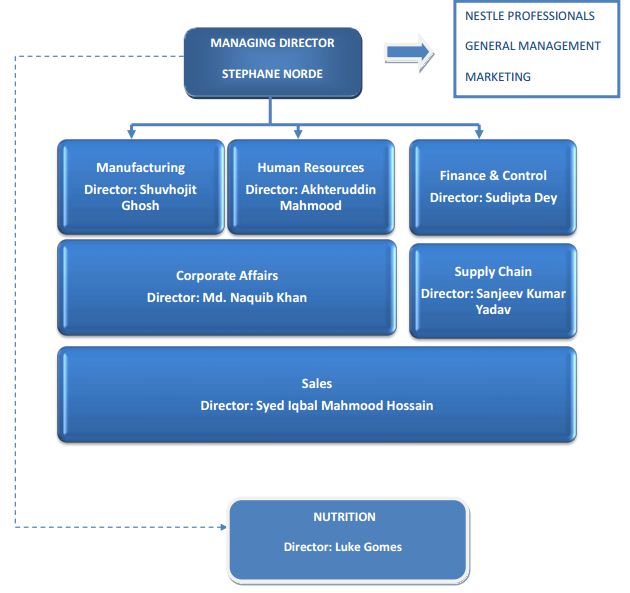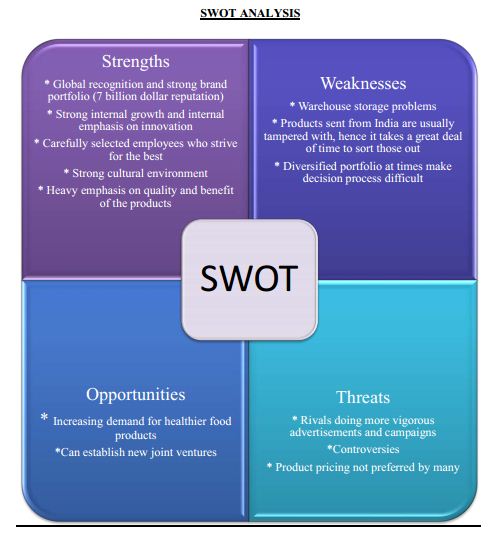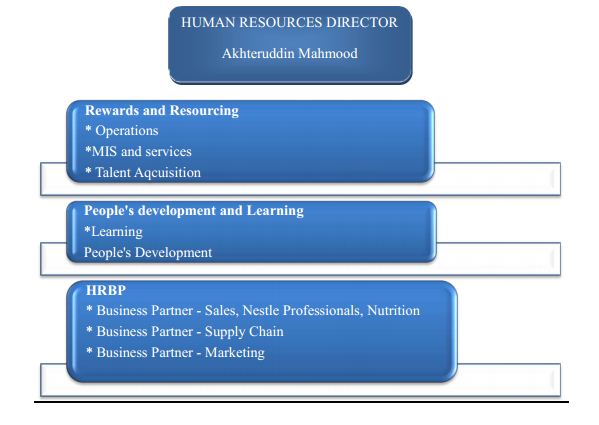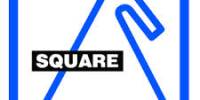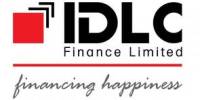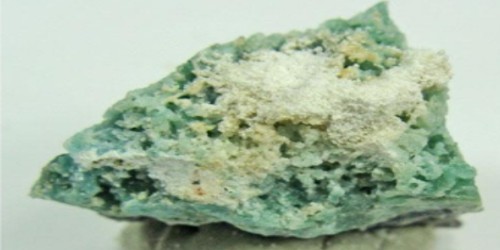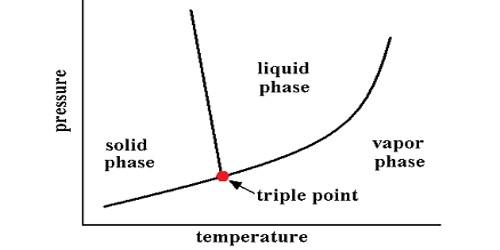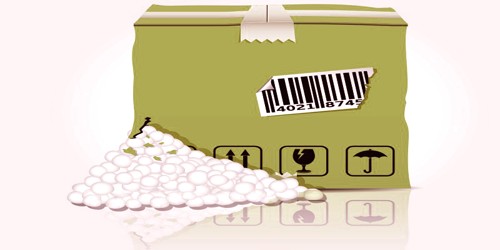Nestlé started its operation in 1994 in Bangladesh and its factory is situated in Sreepur, Gazipur. Nestlé Bangladesh directly employs more than 650 people and more than 1000 people are employed by suppliers and distributors in connection to Nestlé. Vastly sold products in Bangladesh are Nido, Nescafé, Maggi noodles and soup, Maggi Shad-e-Magic, breakfast Cereals such as Corn Flakes and Koko Crunch, Coffee-Mate, Munch rolls and many more.
Nestlé is present around the globe, on all continents, with around 230,000 people working in more in an 84 countries with 466 factories and with sales representatives in at least another 70 countries. Nestlé is the world’s largest food group, not only in terms of its sales but also in terms of its product range and its geographical presence. Nestlé covers nearly every field of nutrition: infant formula, milk products, chocolate and confectionery, instant coffee, ice-cream, culinary products, frozen ready-made meals, mineral water etc.
Being an intern in the Human Resources function, I got the splendid opportunity to see how Nestlé in Bangladesh finds the best people for their dynamic workforce and why employees in Nestlé Bangladesh are always so motivated to strive further and further. Details of all those will be discussed on this paper.
Introduction
Nestlé is world’s largest health, nutrition and wellness company. Although globally it is twice in size of its nearest FMCG (fast moving consumer goods) competitors, relatively business expansion is still in the developing stage in Bangladesh. However in the most recent times, it has experienced an organic growth of 40% and this trend predicted to continue in the coming few years.
History of Nestlé
Nestlé was founded by the Henri Nestlé (10 August 1814 – 7 July 1890), a German confectioner in Vevey, Switzerland in 1866. Ever since then, in the food industry Nestlé is the most trusted name, with its one and only target putting a seal on it – Good food Good Life.
This is also the mission of Nestlé, driving the company to provide consumers with the most nutritious choices in a wide range of food and beverage categories. The vision of ―creating shared value and the very own ―Corporate Business Principles shaped the company culture and made them a reliable investor over 86 countries of the world. Today Nestlé employs around 280000 people and have factories or operations in almost every country of the world with a total equity of CHF 62.60 billion.
The timeline of this spectacular journey is as follows –
1866-1905: Henri Nestlé’s quest for a healthy, economical alternative to breastfeeding is the important factor that drives the history of Nestlé Company. Henri Nestlé started his experimentations with various combinations of cow milk. His ultimate goal was to help combat the problem of infant mortality due to malnutrition. People quickly recognized the value of the new product, as Nestlé’s new formula saved the life of children within a few years. In August, 1867 Charles and George Page, two brothers from Lee County, Illinois, USA, established the Anglo- Swiss Condensed Milk Company in Cham. In 1877 Anglo-Swiss added milk-based baby foods to their products and in the following year the Nestlé Company added condensed milk so the firms became direct and fierce rivals. Henri Nestlé retired in 1875 but the company under new ownership retained his name as Farine Lactée Henri Nestlé.
1905-1918: The Company formed by the 1905 merger was called the Nestlé and Anglo-Swiss Milk Company. Most production facilities remained in Europe, however, and the onset of World War I brought severe disruptions, as a result acquiring raw materials and distributing products became increasingly difficult. At the same time the war created tremendous new demand for dairy products, largely in the form of government contracts. By war’s end, the Company had 40 factories, and its world production had more than doubled since 1914. Moreover in this period
Nestlé added chocolate to its range of food products and also the Condensed-milk exports increased rapidly as the Company replaced sales agents with local subsidiary companies. In 1907, the Company began full-scale manufacturing in Australia.
1918-1938: The end of World War I brought with it a crisis for Nestlé. Rising prices for raw materials, the worldwide postwar economic slowdown, and declining exchange rates made the situation worst. In 1921, the Company recorded its first loss. Nestlé’s management brings Louis Dapples as an expert to deal with the situation; his rationalized operations and reduction of the company’s outstanding debt improve the financial condition. On the other hand Nestlé’s first expansion beyond its traditional product line came in 1920s by producing chocolates.
Meanwhile, Brazilian Coffee Institute first approached to Nestlé in 1930 to reduce Brazil’s large coffee surplus, after eight years of research Nestlé came with Nescafé became an instant success.
1938-1944: in this period World War II were felt immediately upset the business once again and Profits dropped from $20 million in 1938 to $6 million in 1939. To overcome distribution problems in Europe and Asia, factories were established in developing countries; particularly in Latin America. As the end of the war approached, Nestlé executives found themselves unexpectedly heading up a worldwide coffee concern, as well a company built upon Nestlé’s more traditional businesses.
1944-1975: The graph of growth sets its trends little higher between 1944 and 1975. As a result many new products were added and outside companies were acquired. Nestlé merged with Alimentana S.A in 1947, purchase of Findus frozen foods occurred in 1960, Libby’s fruit juices joined the group in 1971 and Stouffer’s frozen foods in 1973 and finally in 1974 the Company became a major shareholder in L’oréal, one of the world’s leading makers of cosmetics. The Company’s total sales doubled in the 15 years after World War II.
1975-1981: In 1975 and 1977 price of coffee bean and the price of cocoa tripled. In this situation to maintain a balance, Nestlé went to second venture outside the food industry by acquiring the pharmaceutical and ophthalmic product producer Alcon Laboratories Inc. of U.S; as a result it increased competition and shrink the profit margins.
1981-1995: Improvement of financial situation through internal adjustments and strategic acquisitions are the two important moves in this period. As a result between 1980 and 1984, diversification of several non-strategic or unprofitable businesses occurred. On the other hand Nestlé managed to put an end in the third World to about a serious controversy over its marketing of infant formula in this period. In 1984 Nestlé acquire American food giant Carnation and became one of the largest company in the history of the food industry.
1996-2002: The opening of Central and Eastern Europe, along with China and a general trend towards liberalization of direct foreign investment was good news for the company. On the other hand in July 2000 Nestlé launched a Group-wide initiative called GLOBE (Global Business Excellence) aimed to simplifying business process. Two more acquisitions took place in this period-U.S. ice cream business was to be merged into Dreyer’s and the acquisition of Chef America, Inc. a leading U.S.-based hand-held frozen food product business.
2003-2009: Within this area the acquisition of Mövenpick Ice Cream, Jenny Craigand Uncle Toby’s enhanced Nestlé’s position as one of the world market leaders in the super premium category. On the other hand Novartis Medical Nutrition, Gerber and Henniez join the Company in 2007. Meanwhile Nestlé entered into a strategic alliance with the Belgian chocolatier Pierre Marcolini at the end of 2009.
2010 to present: In mid-2010 Nestlé finalized the sale of Alcon to Novartis. On 1 March 2010, Nestlé concluded the purchase of Foods’ North American frozen pizza business for $3.7 billion. In July 2011, Nestlé SA agreed to buy 60 percent of Hsu Fu Chi International Ltd. for about $1.7 billion. On 23 April 2012, Nestlé agreed to acquire Pfizer Inc.’s infant-nutrition unit for $11.9 billion. Before the acquisition, there was a ‘bidding war’ between the three shareholders Nestlé, Mead Johnson Nutrition and Danone. Each of the companies held a share, with Nestlé holding the biggest share (17%) (Johnson held 15%, Danone 13%).
As of 28 May 2013, Nestlé has announced that it will expand R&D in its research center in Singapore. With a primary focus on health and nutrition, Nestlé is investing $4.3 million in its Singapore center, creating 20 jobs for experts in related R&D fields. In 2013 Nestlé Nigeria successfully pioneered and implemented the use of compressed natural gas as a fuel source to power their Flowergate factory.
Globally recognized brands of Nestlé:
The brand portfolio delivers the message once again how big Nestlé in the food industry. It is the trust and effort of the Nestlé professionals which created the win wining scenario. Today Nestlé covers almost every food and beverage category – giving consumers tastier and healthier products.
- Baby foods: Cerelac, Lactogen, NAN, Gerber, Gerber Graduates, NaturNes, Nestum
- Bottled water: Nestlé Pure Life, Perrier, Poland Spring, S.Pellegrino
- Cereals: Chocapic, Cini Minis, Cookie Crisp, Estrelitas, Fitness, Nesquik Cereal
- Chocolate & confectionery: Aero, Butterfinger, Cailler, Crunch, Kit Kat, Orion, Smarties, Wonka
- Coffee: Nescafé, Nescafé 3 in 1, Nescafé Cappuccino, Nescafé Classic,NescaféDecaff, Nescafé Dolce Gusto, Nescafé Gold, Nespresso
- Culinary, chilled and frozen food: Buitoni, Herta, Hot Pockets, Lean Cuisine, Maggi, Stouffer’s, Thomy
- Dairy: Carnation, Coffee-Mate, La Laitière, Nido
- Drinks: Juicy Juice, Milo, Nesquik, Nestea
- Food service: Chef, Chef-Mate, Maggi, Milo, Minor’s, Nescafé, Nestea, Sjora, Lean Cuisine, Stouffer’s
- Healthcare nutrition: Boost, Nutren Junior, Peptamen, Resource
- Ice cream: Dreyer’s, Extrême, Häagen-Dazs, Mövenpick,
- Petcare: Alpo, Bakers Complete, Beneful, Cat Chow, Chef Michael’s Canine Creations, Dog Chow, Fancy Feast, Felix, Friskies, Gourmet, Purina, Purina ONE, Pro Plan
- Sports nutrition: PowerBar
Nestlé in Bangladesh:
Popular Nestlé brands started entering this part of the sub-continent during the British rule and the trend continued during the pre-independence days of Bangladesh. After the independence in 1971, Nestlé World Trade Corporation, the trading wing of Nestlé S.A, sent regular dispatch of Nestlé brands to Bangladesh through an array of indentures and agents and some of the brands such as NESCAFE, CERELAC, LACTOGEN, MUNCH ROLLS and MAGGI became some very common products.
Nestlé Bangladesh Limited started its commercial operation in Bangladesh in 1994. Its total authorized capital is TK1.5 billion and total paid up capital is TK 1.1 billion. The only factory of the company in Bangladesh is situated at Sreepur, 55 km north of Dhaka. The factory produces the instant noodles and cereals and repacks milks, soups, beverages and infant nutrition products.
Today Nestlé Bangladesh Ltd. is a strongly positioned organization. The Company is continuously growing through the policy of constant innovation, concentrating on its core competencies and its commitment to high quality food to the people of Bangladesh. Since the beginning of Nestlé’s operation in Bangladesh, the chairman of the company has been Mr. Latifur Rahman, one of the top industrialists of the country, his firm Transcom used to import the products of Nestlé. His business house Transcom is still involved in wide range of business like beverage, pharmaceutical, electronics, newspaper, tea export, fast food franchises etc. Still he remains as an honorary chairman of the company.
In Bangladesh Nestlé’s vision is-to be recognized as the most successful food and drink Company in Bangladesh, generating sustainable, profitable growth and continuously improving results to the benefit of shareholders and employees.
Objectives:
Nestlé Bangladesh’s leading objectives are:
a) To develop safe and wholesome packaged foods using the most efficient and appropriate packaging materials available, while, at the same time, satisfying consumer requirements and expectations.
b) Nestlé Bangladesh seeks packaging solutions that:
• will result in the lowest possible weight and volume of packages
• take into account new packaging materials and processes that reduce the impact on the environment;
• avoid the use of substances that can adversely impact the environment during packaging production and disposal
• decrease packaging waste at all stages, including package manufacturing, utilization and disposal
• increase the use of recycled materials wherever possible; and
• Increase the recyclables and compatibility of its packages with existing waste management schemes.
Strategies:
Nestlé Bangladesh has these strategically key Success Factors:
• Strong brands / relationships with consumers
• Research and development
• Innovation and renovation
• Product availability
There are also a few factorial strategies, stated as follows:
External factors
• Social: Nestlé makes an effort to integrate itself as much as possible into the cultural and social values of the different countries. During operation in Bangladesh Nestlé has launched products with integration of social & cultural factors. This has been done to match the taste buds of Bangladeshi consumers.
• Ethical: Although Nestlé faces ethical dilemmas in commercialization of its products, it does not consider its high price to be an ethical crisis. This is because they are not ready to compromise their quality in order to make their product widely available to all.
Internal factors
• Marketing structure: Nestlé is more people, product and brand oriented than system oriented. Nestlé favors long-term successful business development and even to greater extent, customer life-time value. At the same time Nestlé does not lose sight of the necessity to improve in terms of quality, price and distribution. However, Nestlé remain
conscious of satisfying the wants needs and demands of its consumers. It is also aware of the need to generate a sound profit annually.
Nestlé seeks to earn consumer’s confidence, loyalty and preference and anticipate their demands through innovation and renovations. Therefore Nestlé is driven by an acute sense of performance adhering to quality and customer satisfaction Nestlé is as decentralized as possible within its marketing strategic definitions requiring increasing
flexibility. Nestlé is always committed to the concept of continuous improvement of its activities and customer satisfaction through market segmentation, positioning and target marketing.
ORGANIZATION STRUCTURE
BUSINESS AND FUNCTIONS
Nestlé Bangladesh Limited markets its products throughout the country with the help of it’s distributors. Apart from that, Nestlé Professional is a separate function which is responsible for nthe institutional sale, though it is breaking out of its threshold and going for a more aggressive way of selling the products personally in crowded places such as Robindro Shorobor.
There are currently 80 distributors of Nestlé Bangladesh products of which 76 are retail distributors and remaining 4 are Nestlé Professional’s distributors providing products for the out of home consumptions. The whole country is divided into seven regions:
a) Dhaka North
b) Dhaka South
c) Chittagong
d) Bogra
e) Khulna
f) Sylhet
g) Barisal
Functions of Nestlé Bangladesh
As shown in the organization structure, Nestlé Bangladesh has 10 functions, among which the Managing director controls 3 and the rest is controlled by their individual directors. The General Management take cares of the overall operation of the company, while maintaining their regular governmental affairs and taking key decisions. The Manufacturing Function is where some products are made (like Munch, Maggi) and some, like Nido are repacked. The Human Resources function focuses on the management of employees and organizational culture, as well as retaining the people, motivating them more with each passing day. Supply Chain ensures the stable supply of the products according to the demand of the customers. Marketing looks after the existing brands, market share and product development of the products. Finance and control deals with the financial transactions and most importantly they also apply the control mechanism to remain the company complaint financially and procedurally. The IS/IT17 department falls under the Finance function, hence they also maintain day to day technicality. Sales and Nestlé Professionals are the revenue generating departments for the company. The Nutrition function, however, is a separate entity somewhat, for their orders are usually initiated in India, and they carry out their tasks just as orders.
INDUSTRY AND COMPETITOR ANALYSIS
While globally Nestlé’s product ranges are huge, it’s still in its developing stage in Bangladesh. According to inside observations and consumer feedback, the main competition Nestlé Bangladesh is facing in terms of Culinary is coming from the very recent advent of ‘Mama Noodles’, and ‘Knorr Soup’. While it is true most in Bangladesh practically grew up with Maggi noodles, the consumers are always looking for something different, and while Maggi provides all the necessary nutrition, many claim that it lacks in taste. Similar situation in case of Maggi soup vs Knorr soup. However, Maggi still is, in the lead in terms of market share. Whereas Munch rolls are extremely cheap and according to consumers, taste good, people still prefer Kitkat even though it’s priced higher. Yes, Kitkat is a Nestlé product, but not marketed by Nestlé Bangladesh, and are basically available even in the smallest shops, whereas there were times where it has been observed that munch rolls are not available everywhere. Also, many people have questioned the authenticity of the chocolate used in Munch rolls, since it’s priced that low. Aside from that, consumers with a low income range prefer the national brands anyway.
Kellogs is a far well known name in Bangladesh than Nestlé is, when it comes to breakfast cereal. It has been pointed out that Nestlé cereals end fast due to the smaller size in comparison to Kellogs packets, but there have been no complaints about taste. The situation is a bit happier when it comes to baby foods, because Cerelac still is the number one choice of mothers, and owns a big market share. And Nescafe is of course, the number one
choice in terms of Coffee. Consumers claim Nido not only to be over expensive, but also unhealthy, due to a lot of
controversies related to this particular product. Hence, they prefer Marks, Dano, Diploma etc. over it.
INTRODUCTION TO HUMAN RESOURCE MANAGEMENT
Human resource management (HRM or simply HR) is a function in organizations designed to maximize employee performance in service of their employer’s strategic objectives. HR is primarily concerned with how people are managed within organizations, focusing on policies and systems. HR departments and units in organizations are typically responsible for a number of activities, including employee recruitment, training and development, performance appraisal, and rewarding (e.g., managing pay and benefit systems). HR is also concerned with industrial relations, that is, the balancing of organizational practices with regulations arising from collective bargaining and governmental laws.
Being the largest Food and Wellness Company, Nestlé has more than 280,000 people working with it worldwide. Globally standardized operational procedures, international working environment, global attachment programs, globally shared culture, structured development and evaluation framework and extensive training programs have made Nestlé one of the leading and preferred employers worldwide. Nestlé produces wide range of food and nutrition products for all the age groups of customers. It is very important to the HR function that they add value and make customers lives healthier.
Nestlé Bangladesh employs nearly 450 people and many more with indirect contracts with its own factory in Sreepur, Gazipur. Nestlé’s Manpower is considered to be their best asset and prefer people to work with enthusiasm, wit and efficiency to enhance productivity and sustainable growth to the organization. As the Human Resource Director, Akhteruddin Mahmood quoted : “At our professional life we tend to spend a significant portion of the day at our workplace. Similarly, work life is the largest part of an individual’s life. It is very important to have a cohesive & winning work environment where an individual feels comfortable to be and contribute. Organizational culture immensely influences a person’s achievements and performance and I proudly can say these two are the biggest strengths of Nestlé Bangladesh.
People are at the centre of all the attention of Nestlé Bangladesh. We try maintaining good work life balance and provide the individual mental peace for better efficiency at work. Dynamic development culture and transparency in performance management are the other two assets that we have here in place. We focus on employee performance and look for scopes to add value and make the individual more efficient and better performing.
Working at Nestlé is a rewarding experience. This work place exposes you to the world class practices and vibrant culture. Nestlé, in all its markets, try to follow standards management procedures. That means working here in Nestlé Bangladesh provides a Global experience.”
The Human Resource Function is branched out as follows:
RECRUITMENT AND SELECTION AT Nestlé
Any kind of employees are chosen very carefully at Nestlé; let it be permanent, contractual of even interns. The Recruitment and Selection process is of three types:
a) Interns:
Nestlé has very recently developed a new internship program, though which interns after being selected, will go through 4 steps of assessments through every quarter, in order to make it as a permanent employee. There is the general first 3 months, where the interns will be assessed by everything – work, etiquette, compliance with the regulations of the organization, and so on. Failure to do so will not have an extension, and the intern in question will be asked to leave. Those who succeed will get another extension of 3 months, and the process will be continued for 2 more quarters or until the authorities find the intern ready to become a permanent employee. The decision deadline is 1 year highest.
Now the stages of selecting an intern in the first place go as such:
1. Intern request: The department in requirement of an intern, will fill out a form and submit it to the Talent Acquisition Manager, along with all the requirements needed and job descriptions.
2. Initial search: CVs are usually gathered through Career Service Offices of well known universities, through job fairs, or through employee referrals.
3. Initial Selection: When a CV meets the specific criterion, it is put in the pool of candidates to appear for the written exam.
4. Call for interviews: Certain amount of marks is set for different departments. Candidates are then on, selected based on that marks.
5. Final selection: In the interview, the candidate is marked based on a) Attitude, b) Interest and c) Competence. The candidate scoring highest, is finally selected.
b) Permanent employees:
Very similar to the intern recruitment process, details given as follow:
1. Employee request: The department in requirement of an intern will fill out a form and submit it to the Talent Acquisition Manager, along with all the requirements needed and job descriptions.
2. Initial search: CVs are usually gathered through Career Service Offices of well known universities, through job fairs, through job portals or through employee referrals.
3. Initial Selection: When a CV meets the specific criterion, it is put in the pool of candidates to appear for the first interview, which is usually only with the Human Resource department, for judging the initial competitiveness.
4. Call for second interview: If the Human Resource department thinks the candidate is capable to make it as a prospective candidate to the final interview, the candidate is selected, where he/she is interviewed by the Human Resource Director and the Director of the department he/she is to be hired for.
5. Final selection: In the interview, the candidate is marked based on a) Attitude, b) Interest and c) Competence. The candidate scoring highest, is finally selected, and after a medical test, is good to go.
c) Contractual/Temporary employees:
While the process is the same as permanent employees, the selection process varies, as contractual employees are searched through by headhunters or agencies such as peoplescape.
CONCLUSION
There were a number of online trainings required to be completed by every employee and intern. The trainings included:
• Nestlé Corporate Business Principles
• Nestlé Charter Awareness
• Nestlé Globe IS/IT Awareness

